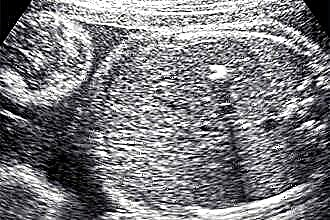 Timely diagnosis and removal of benign neoplasms can prevent conductive hearing loss, retronasal sore throat, chronic rhinitis, deformity of the face and chest. You can find out the pathology by the characteristic clinical manifestations, the severity of which is largely determined by the degree of proliferation of adenoid vegetations.
Timely diagnosis and removal of benign neoplasms can prevent conductive hearing loss, retronasal sore throat, chronic rhinitis, deformity of the face and chest. You can find out the pathology by the characteristic clinical manifestations, the severity of which is largely determined by the degree of proliferation of adenoid vegetations.
Are adenoids the norm?
How to understand that a child has grown adenoid vegetations? Adenoids are a hypertrophied tonsil, which is located in the fornix of the nasopharynx. Even a slight proliferation of glandular tissues is regarded by otolaryngologists as a deviation from the norm. The pharyngeal tonsil takes part in warming and purifying the air from opportunistic microorganisms. Against the background of the frequent development of respiratory diseases, the number of structural elements in the lymphoid tissues increases, which leads to hypertrophy of the immune organ.
It is difficult to diagnose pathology in children under the age of 3 years due to the paucity of symptoms and complaints of the child about deteriorating health.
An increase in adenoid vegetation leads to blockage of the nasal passages and difficulty in breathing through the nose. It is known that with hypertrophy of the nasopharyngeal tonsil, the child's body does not receive about 16-18% of oxygen, which negatively affects the physiological and sometimes mental development of the child. Surely, only an otolaryngologist can determine the degree of hypertrophy of the immune organ after a hardware examination of the patient's nasopharynx.
Signs of adenoids
Is it possible to independently understand the signs and symptoms of hypertrophy of the nasopharyngeal tonsil? Without special equipment, it is almost impossible to determine the pathology at the initial stages of the proliferation of lymphadenoid tissues. In most cases, parents seek help from a pediatrician already at  the development of a lingering rhinitis and frequent relapses of infectious diseases that occur approximately at 2 or 3 stages of the growth of adenoid vegetations.
the development of a lingering rhinitis and frequent relapses of infectious diseases that occur approximately at 2 or 3 stages of the growth of adenoid vegetations.
Pathology can be suspected when the following signs are detected:
- frequent mouth opening;
- snoring and snoring during sleep;
- lethargy and tearfulness;
- headache;
- slight hearing impairment;
- absent-mindedness;
- nasal congestion without a runny nose.
Adenoids in a child arise from the frequent transfer of colds. If an infection develops in the respiratory organs, the pharyngeal tonsil increases in size, which indicates an intensive production of immunoglobulin. With regression of inflammatory processes, the immune organ decreases to its normal physiological size. But if ENT diseases recur too often, the pharyngeal tonsil "does not have time" to return to normal, which becomes the cause of the proliferation of glandular tissue.
Important! Frequent relapses of infection lead to a decrease in local immunity, which increases the risk of inflammation of the adenoids.
Common Symptoms
The general symptoms of adenoids are similar to the manifestations of colds, so parents often ignore the appearance of the problem. As the lymphoid tissues grow, the child's health condition worsens. In about 42% of cases, patients seek help from an ENT doctor already at stages 2 and 3 of hypertrophy of adenoid vegetations.
It should be understood that the earlier the pathology is detected, the more painless the treatment will be. With a slight increase in the size of the nasopharyngeal tonsil, the symptoms of the disease can be eliminated with the help of conservative therapy. If the hyperplastic glandular tissue overlaps the nasal canals by more than 50%, surgery (adenotomy) will be required.
Important! With partial removal of adenoid vegetations, the risk of re-proliferation of the pharyngeal tonsil is 47%.
The disease can be recognized by the following clinical manifestations:
- recurrent headaches;
- persistent violation of nasal breathing;

- persistent nasal congestion;
- refractory rhinitis;
- mucous nasal discharge;
- dry cough after waking up;
- periodic breath holding during sleep;
- runoff of mucus along the walls of the laryngopharynx;
- hearing loss;
- frequent exacerbation of pharyngitis, tonsillitis, sinusitis;
- violation of phonation;
- constant breathing through the mouth;
- snoring during sleep;
- decreased appetite;
- memory impairment;
- nasal voice;
- unmotivated fatigue.
Hyperplasia of the adenoids in a child leads to persistent respiratory failure and rhinophonia. Brain hypoxia negatively affects the mental development of the patient and the quality of life. Untimely elimination of pathology entails the development of depression, unmotivated aggression and irritability.
Local manifestations
The gradual increase in the size of the immune organ exacerbates the problem with nasal breathing. Benign lesions that block the mouth of the auditory tubes and nasal passages prevent mucus from flowing out of the nasal cavity. Congestive hyperemia of soft tissues leads to edema of the palatine arches, soft palate, nasopharyngeal mucosa, etc.
Pathological changes in the upper respiratory tract provoke a decrease in local immunity, as a result of which chronic sinusitis, rhinitis, postnasal flow syndrome, barking cough, etc. develop. Shallow breathing eventually leads to deformation of the chest, as a result of which it takes the shape of a boat keel.
Constant opening of the mouth causes the facial skull to stretch and the appearance of an indifferent facial expression. Due to the lengthening of the lower jaw, the bite is disturbed, and the face becomes puffy. If the adenoid vegetation is removed too late, even after excision of hyperplastic tissues in the nasopharynx, the child continues to breathe through the mouth.
The degree of development of adenoids
Depending on the severity of the symptomatic picture, the degree of proliferation of glandular tissues and the severity of the consequences, three degrees of hypertrophy of the pharyngeal tonsil are distinguished. As a rule, with a slight increase in adenoid vegetations, the symptoms of pathology are poorly expressed and appear only during sleep or after the child wakes up. Timely recognition of an ENT disease allows you to prevent irreversible consequences in the body associated with impaired nasal breathing.
| The degree of development of adenoid vegetation | Concomitant clinical manifestations |
|---|---|
| 1 | pathological symptoms are absent during the patient's wakefulness and appear exclusively at night, since the amygdala blocks the nasal passages by less than 35%; when taking a horizontal position, the hypertrophied tonsil is slightly stretched, which leads to difficulty breathing, swelling of the nasopharynx, cough upon waking |
| 2 | overgrown adenoid vegetations overlap the choanas by more than 45-50%, as a result of which breathing through the mouth is significantly hampered; the child snores during sleep and complains of constant nasal congestion |
| 3 | hyperplastic tissue of the tonsils almost completely overlap the nasal canals, so the child can only breathe through the mouth; over time, there is a lingering runny nose, dry cough and swelling of the nasopharyngeal mucosa; relapses of respiratory diseases are more frequent, which leads to inflammation of the adenoids |
Constant breathing through the mouth inevitably leads to deformation of the dentition. If nasal congestion is not eliminated in time, the shape of the facial skull will begin to change after a few months.
Effects
Are there any consequences for adenoids and how to prevent them? It should be understood that a hypertrophied amygdala destructively affects the work of the entire respiratory system. This can cause irreversible processes. In particular, it is impossible to eliminate the manifestations of the "adenoid face" even in the case of excision of the overgrown glandular tissues.
The irreversible changes in the child's body that occur against the background of adenoid vegetations include:
- change in bite;
- conductive hearing loss;
- rachiocampsis;
- dysfunction of the urinary system;
- chronic ENT diseases.
Important! Lack of oxygen negatively affects the functioning of the child's central nervous system, which often becomes the cause of the development of neuroses.
Is it possible to immediately understand that the child's pharyngeal tonsil has begun to grow? Obvious symptoms such as hearing loss, chronic rhinitis and "adenoid face" appear already at the advanced stages of the development of pathology. You need to contact a pediatrician when you find the slightest signs of the development of adenoids - sniffling in a dream, fatigue, poor school performance, apathy, etc. Timely elimination of violations in the respiratory system prevents the development of irreversible processes.
What is adenoiditis?
It is necessary to distinguish between the usual hypertrophy of the tonsil and its inflammation. Infectious lesions of adenoid vegetations are called adenoiditis (retronasal tonsillitis). The disease is often preceded by sinusitis, pharyngitis, tonsillitis, bacterial rhinitis, etc. The causative agents of infection are pathogenic microbes and viruses such as rhinoviruses, streptococci, influenza virus, adenoviruses, meningococci and Pseudomonas aeruginosa.
The inflammatory process in the tissues of the nasopharynx leads to the development of allergic reactions and severe swelling of the mucous membranes. Delayed treatment of the infection entails the formation of purulent exudate in the lesions, which is fraught with the formation of abscesses. Subsequent stenosis of the laryngopharynx leads to respiratory failure and acute asphyxia. Chronic adenoiditis can provoke the development of glomerulonephritis and pyelonephritis.
Acute and chronic adenoiditis is treated with antibacterial and antiviral medications. If infectious and allergic reactions in the respiratory organs are not stopped in time, this will lead to intoxication of the body. The penetration of metabolites of pathogenic agents into the systemic circulation can lead to impaired renal function.
Symptoms of adenoiditis
What are the symptoms of adenoid inflammation in children? Retronasal angina, i.e. acute adenoiditis, diagnosed mainly in children during the active development of the nasopharyngeal tonsil. ENT disease often occurs as a complication of catarrhal processes in the paranasal sinuses and laryngopharynx.
It is possible to detect inflammation of hyperplastic tissues by the following clinical manifestations:
- temperature increase;
- pain in the nose, radiating to the head;
- ear congestion;
- obsessive cough;
- chronic rhinitis;
- accumulation of viscous phlegm in the pharynx;
- soreness of the soft palate when swallowing;
- significant hearing loss;
- purulent discharge from the nose;
- parenteral dyspepsia;
- inflammation of the conjunctiva of the eyes;
- enlarged lymph nodes;
- attacks of suffocation at night;
- hyperemia of the laryngopharyngeal mucosa.
If a child has symptoms of inflammation of the adenoids, you need to seek help from an ENT doctor. Delayed treatment of the disease can lead to dysphagia and paratonsillar abscess. Indirect signs of septic inflammation of adenoid vegetations are hyperemia and swelling of the palatine arches, blockage of the glands in the lymphadenoid tissues, and a whitish coating on the walls of the throat.
Important! Acute adenoiditis can be complicated by pneumonia, bronchitis and laryngotracheobronchitis.
Diagnostics
 How are adenoids treated in children? Symptoms of the disease can be confused with manifestations of other ENT diseases. Unlike the tonsils, the nasopharyngeal tonsil is not visible during visual examination, therefore, only a qualified specialist can determine the degree of organ hypertrophy and the presence of inflammation after a hardware examination of the patient.
How are adenoids treated in children? Symptoms of the disease can be confused with manifestations of other ENT diseases. Unlike the tonsils, the nasopharyngeal tonsil is not visible during visual examination, therefore, only a qualified specialist can determine the degree of organ hypertrophy and the presence of inflammation after a hardware examination of the patient.
For an accurate diagnosis, the otolaryngologist conducts the following types of examination:
- pharyngoscopy - an assessment of the condition of the mucous membrane of the oropharynx, which is carried out using a special speculum and a medical spatula; allows you to determine the presence of foci of inflammation and mucopurulent exudate on the surface of the pharyngeal tonsil;
- x-ray of the nasopharynx - determination of the degree of hypertrophy of the immune organ by x-ray taken in the lateral projection of the nasopharynx;
- anterior rhinoscopy - a visual examination of the nasal passages, which is carried out using an otolaryngological mirror and a special flashlight; allows you to assess the swelling and patency of the nasal passages;
- posterior rhinoscopy - examination of the nasal canals using a mirror, which allows you to assess the degree of patency of the choans and swelling of the surrounding tissues;
- nasopharyngeal endoscopy - examination of the nasal cavity using a flexible endoscope; a highly informative diagnostic method allows you to accurately determine the location of the foci of inflammation in the amygdala and the degree of its expansion;
Hardware examination is a proven and most reliable method for differential diagnosis of ENT disease. However, it is possible to determine the nature of the causative agent of the infection only after obtaining the results of virological and bacterial culture. Based on the data obtained, the doctor prescribes drugs for the patient to eliminate inflammation and, accordingly, the subsequent expansion of adenoid vegetations.
Therapy
How to treat adenoid vegetations? Therapy is carried out with the help of medications or surgery by excision of hyperplastic glandular tissue with an adenotome. The method of treatment determined by a specialist depends on the degree of hypertrophy of the immune organ. It is almost impossible to restore the normal size of the amygdala with the help of medications at stages 2 and 3 of the growth of soft tissues.
 It should be noted that the tactics of therapy may depend not only on the degree of development of adenoid vegetations, but also on concomitant clinical manifestations. As a rule, the following types of drugs are included in the scheme of conservative treatment of ENT pathology:
It should be noted that the tactics of therapy may depend not only on the degree of development of adenoid vegetations, but also on concomitant clinical manifestations. As a rule, the following types of drugs are included in the scheme of conservative treatment of ENT pathology:
- pain relievers - Nurofen, Nimesulide, Ibuprofen;
- antihistamines - "Fenkarol", "Suprastin", "Clarisens";
- vasoconstrictor - "Adrianol", "Naphtizin", "Nazol Baby";
- antibiotics - "Amoxiclav", "Zinnat", "Ceftriaxone";
- immunostimulants - "Dekaris", "Immunal", "Viferon";
- solutions for rinsing the nasopharynx - "Humer", "No-Sol", "Aqualor";
- solutions for inhalation - "Sodium Chloride", "Fluimucil", "Eucasept".
When taking antibiotics, it is advisable to include probiotics in the treatment regimen that prevent the development of dysbiosis.
Absolute indications for adenotomy are severe tonsil hypertrophy (2-3 degrees of proliferation of adenoid vegetations), constant relapses of ENT diseases, persistent runny nose and absolute obstruction of the nasal passages.
In young children, the operation is performed only under general anesthesia, which allows the surgeon to easily remove all tissues of the hypertrophied tonsil.




